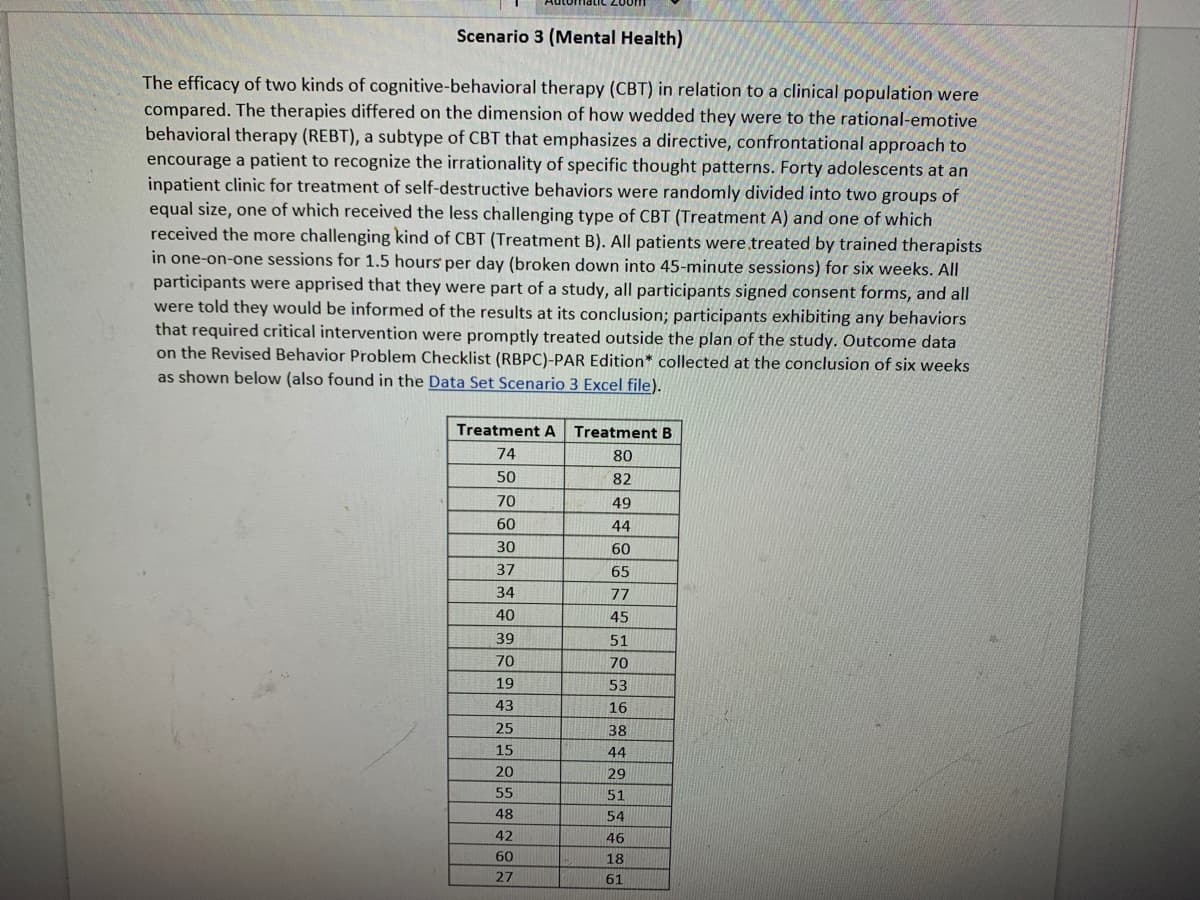What is the shape of this data analysis?
Chapter6: Systems Of Equations And Inequalities
Section: Chapter Questions
Problem 17PS: Cholesterol Cholesterol in human blood is necessary, but too much can lead to health problems. There...
Related questions
Topic Video
Question
What is the shape of this data analysis?

Transcribed Image Text:Scenario 3 (Mental Health)
The efficacy of two kinds of cognitive-behavioral therapy (CBT) in relation to a clinical population were
compared. The therapies differed on the dimension of how wedded they were to the rational-emotive
behavioral therapy (REBT), a subtype of CBT that emphasizes a directive, confrontational approach to
encourage a patient to recognize the irrationality of specific thought patterns. Forty adolescents at an
inpatient clinic for treatment of self-destructive behaviors were randomly divided into two groups of
equal size, one of which received the less challenging type of CBT (Treatment A) and one of which
received the more challenging kind of CBT (Treatment B). All patients were.treated by trained therapists
in one-on-one sessions for 1.5 hours per day (broken down into 45-minute sessions) for six weeks. All
participants were apprised that they were part of a study, all participants signed consent forms, and all
were told they would be informed of the results at its conclusion; participants exhibiting any behaviors
that required critical intervention were promptly treated outside the plan of the study. Outcome data
on the Revised Behavior Problem Checklist (RBPC)-PAR Edition* collected at the conclusion of six weeks
as shown below (also found in the Data Set Scenario 3 Excel file).
Treatment A
Treatment B
74
80
50
82
70
49
60
44
30
60
37
65
34
77
40
45
39
51
70
70
19
53
43
16
25
38
15
44
20
29
55
51
48
54
42
46
60
18
27
61
Expert Solution
This question has been solved!
Explore an expertly crafted, step-by-step solution for a thorough understanding of key concepts.
Step by step
Solved in 2 steps with 1 images

Knowledge Booster
Learn more about
Need a deep-dive on the concept behind this application? Look no further. Learn more about this topic, statistics and related others by exploring similar questions and additional content below.Recommended textbooks for you


Glencoe Algebra 1, Student Edition, 9780079039897…
Algebra
ISBN:
9780079039897
Author:
Carter
Publisher:
McGraw Hill


Glencoe Algebra 1, Student Edition, 9780079039897…
Algebra
ISBN:
9780079039897
Author:
Carter
Publisher:
McGraw Hill